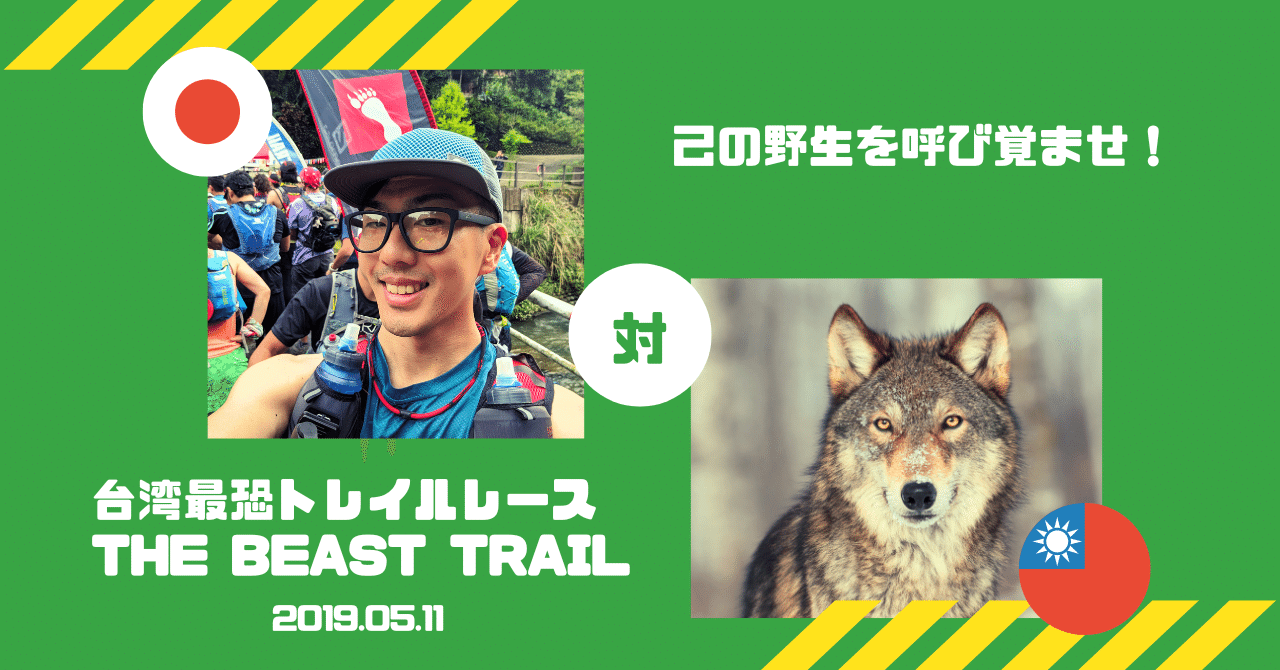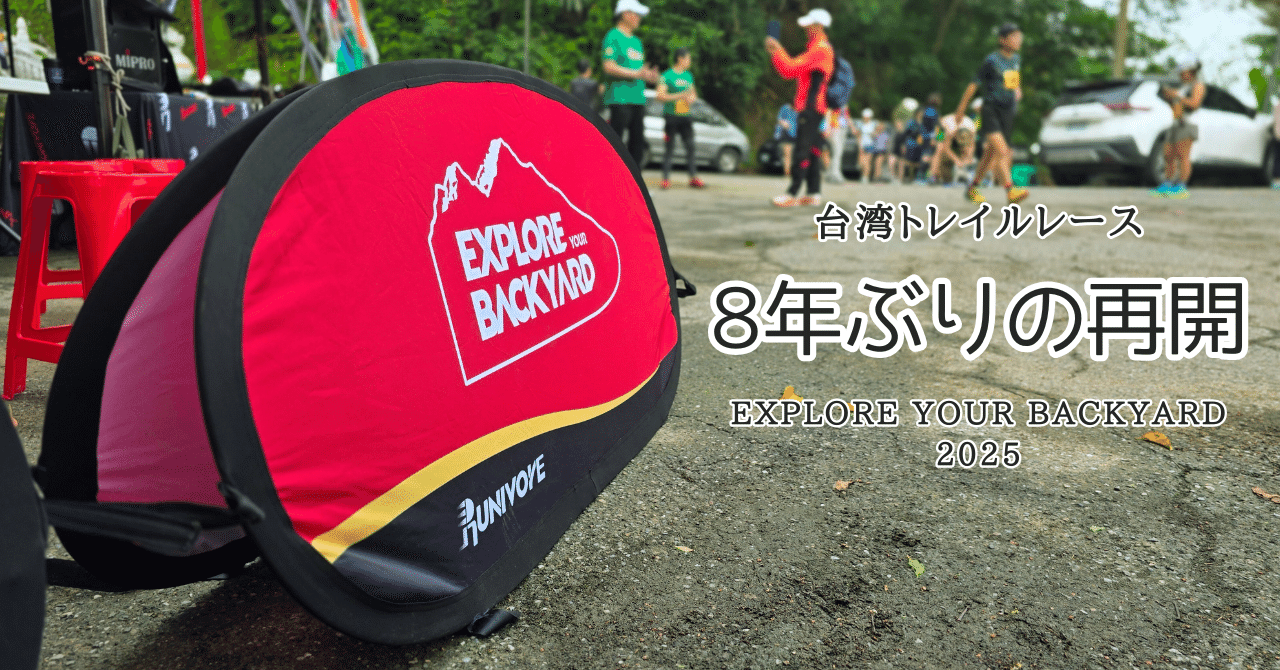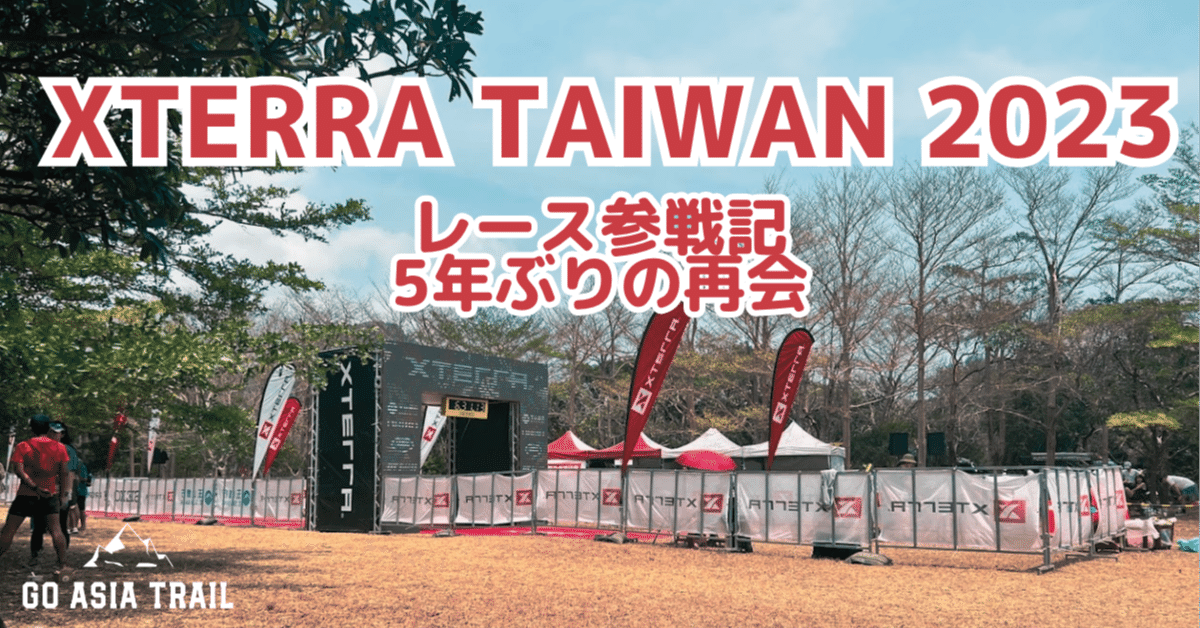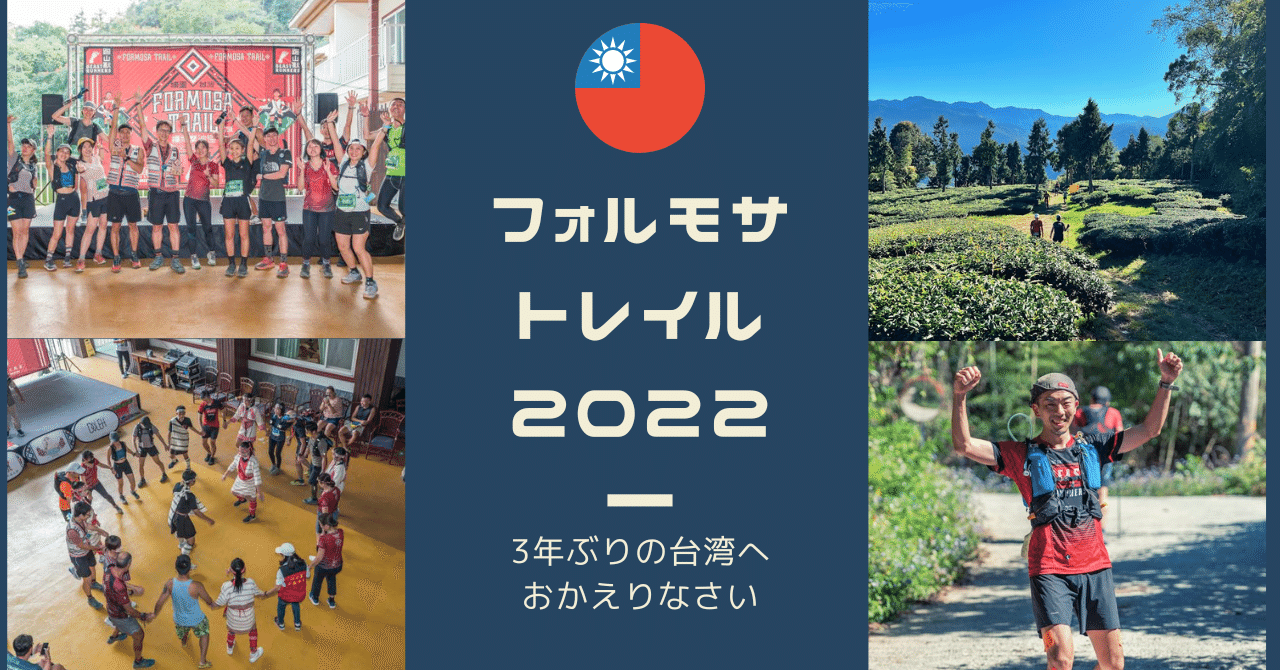Last Saturday (May 11, 2019), I participated in THE BEAST TRAIL, a trail race held near Taipei, Taiwan (New Taipei City) THE BEAST TRAIL is a trail race in Taiwan that has been discussed several times on this site. It can be translated as "beast trail. I had been interested in this race for a long time, and it was one of the races I listed as a "must-do" race in my article on the Asia Trail feature in RUN + TRAIL vol.37. In May, when it became easier to get time off from my day job, I entered THE BEAST TRAIL 25km I entered the 25km Adventure category before the Dalian 100!
Since it was after the Dalian 100km, I entered with the idea of running a short 25km race and then taking my time to go sightseeing, but the world was not so easy.
About THE BEAST TRAIL
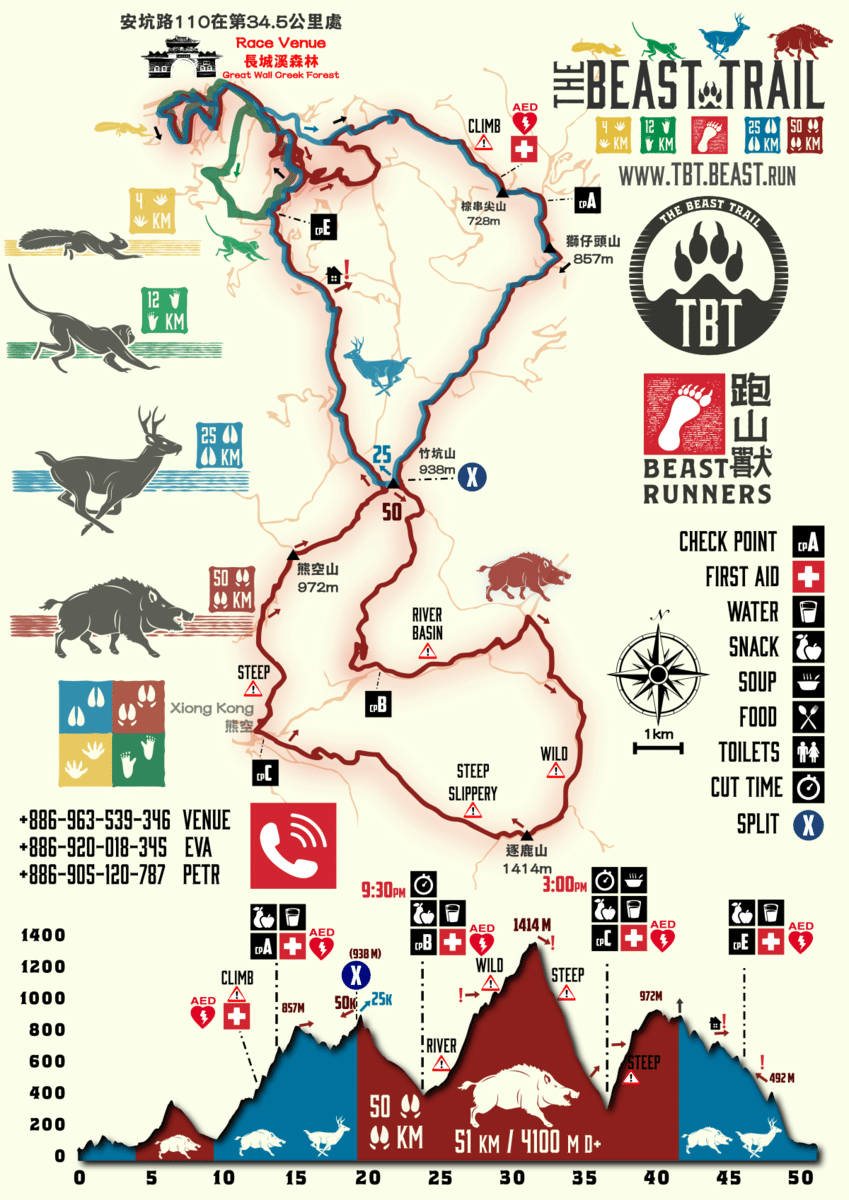
There are four different courses: 50km, 25km, 12km, and 4km. There used to be 100 km and 80 km categories, but they were discontinued due to frequent course losses. At first glance, the combination of distance and accumulated elevation seems to be the same as in Japanese trail races, but there is a level of difficulty in this race that cannot be measured by these numbers alone.
Not only THE BEAST TRAIL, but also other trail races in Taiwan are more challenging than those in Japan and Hong Kong. The climbs are rocky, river climbs and river crossings, the descents are technical, and the trails are not as well maintained as those in Japan, so there are many trees and weeds. And the climate is hotter and more humid than in Japan, making it even more challenging. Therefore, if you participate in a trail race thinking it is a 50km or 25km race, you will be in a lot of pain. You should be prepared to take twice as much time as the distance of the race, or you will have a hard time (laugh).
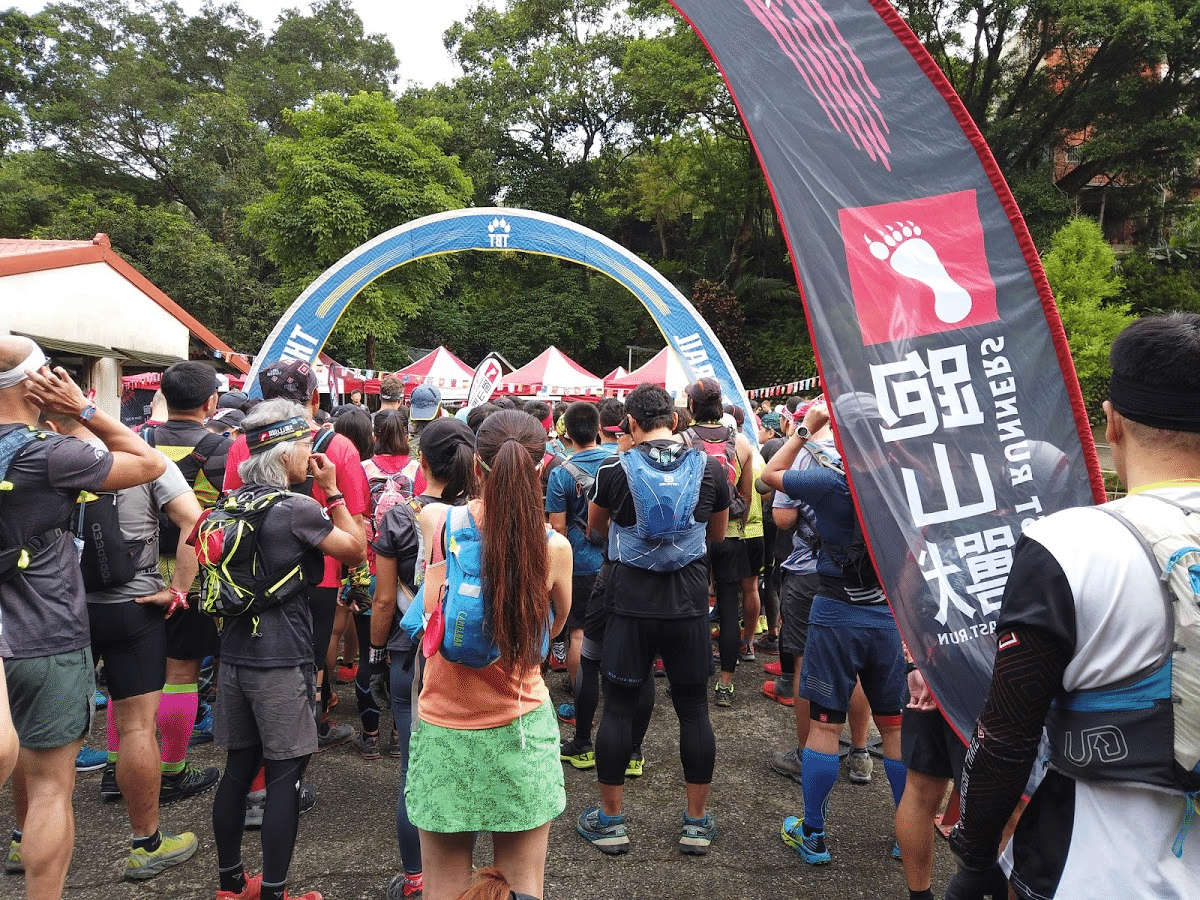
The starting point is a campground called "Changcheng Creek Forest. It takes about one hour from Taipei Station by shuttle bus (paid service, reservation required). 25km runners start at 5:00 a.m., and those who live near Taipei can take the shuttle bus to the start point. Many people living near Taipei came by private car. Geographically located south of Taipei City, the event is held in its deep forests and mountains. To the east is the famous hot spring town of Wulai, and to the southeast is around the course of the "Qilan 100 Forest Road Yueye" trail race that I participated in this March.
What was it like to run the race?
The course was as tough as the previous reputation, and it took me more than 7 hours to FINISH the 25km course. Why did it take so long?
The climbs are like rock climbing, climbing wall-like trails and rocks.
The descent was technical and the trail was muddy and slippery.
Hotter and more humid than Japan
It all boils down to this: "Why is this race so hard? Why did I enter such a tough race? I should have entered the 12km race.
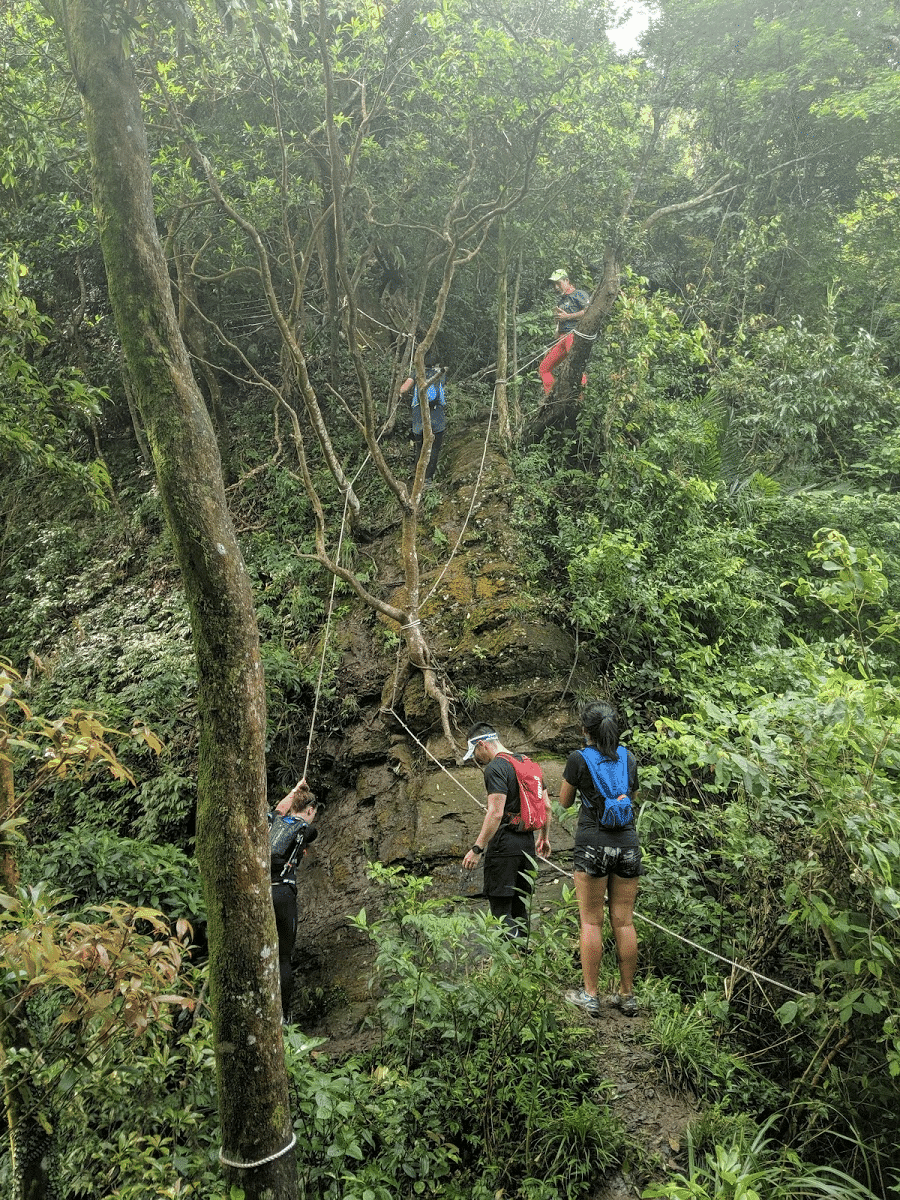
The climb looks like the picture above. This is just a small part of the climb, but there are many places where you can't climb without a rope like this. Especially from 8km to 10km (CP.A) from the start point, there are many sections like this. I would describe it as climbing up the stone walls of Osaka Castle.
I am good at climbing, so I could handle it, but the downhill was so muddy that I could not go fast at all. It had been raining in the suburbs of Taipei since the week before the race, and the trails were muddy and slippery. And it was very slippery. The second half of the 25km course is downhill, but it still took me about 20 minutes to go one kilometer. Thanks to this, my beloved Vibram Fivefingers V-Trail was already covered in mud after the goal... (laughs)
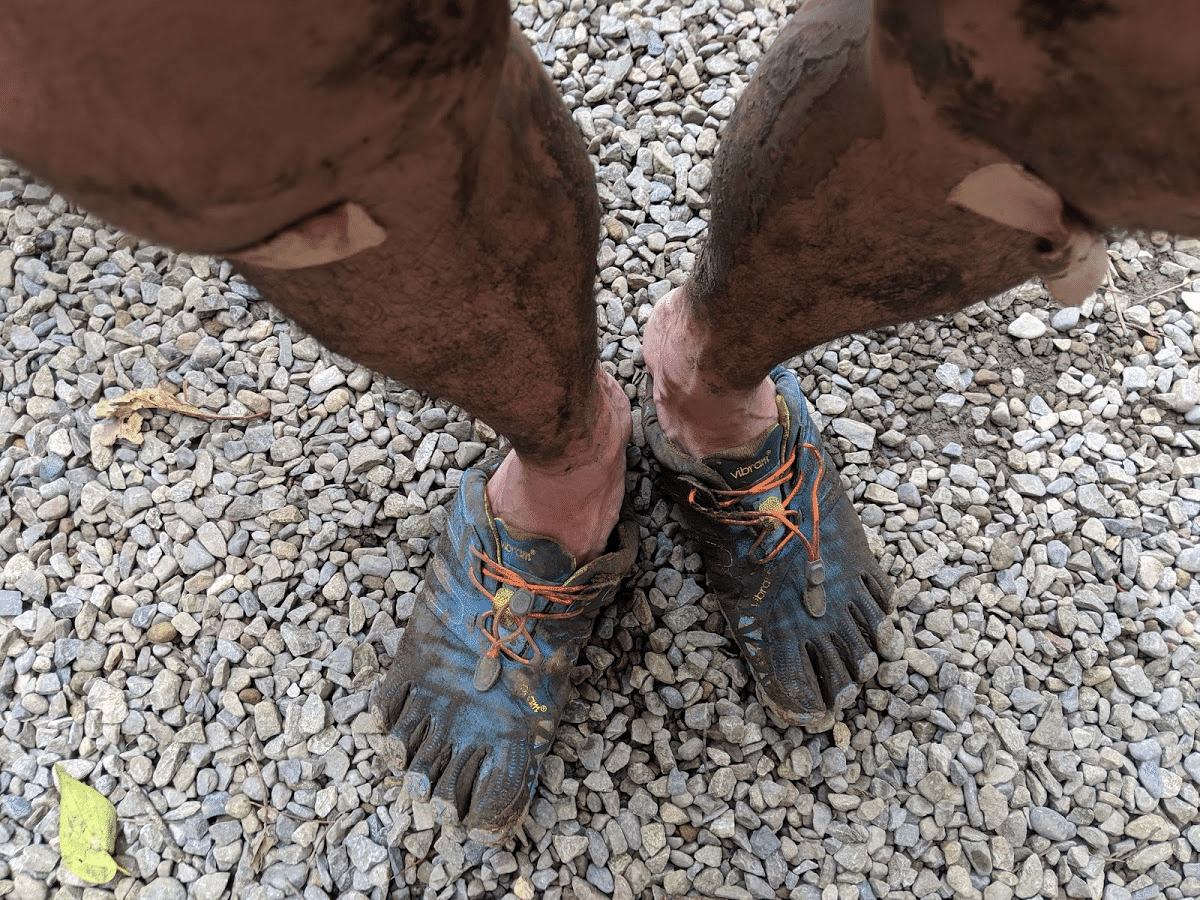
I brought my new DJI Osmo Pocket for video shooting, but in the second half of the race, the course was so technical and slippery that there was not enough room for filming, so I felt it was dangerous to run while filming. Therefore, I decided to put it in the back of my bag for the second half of the race and concentrate on running.
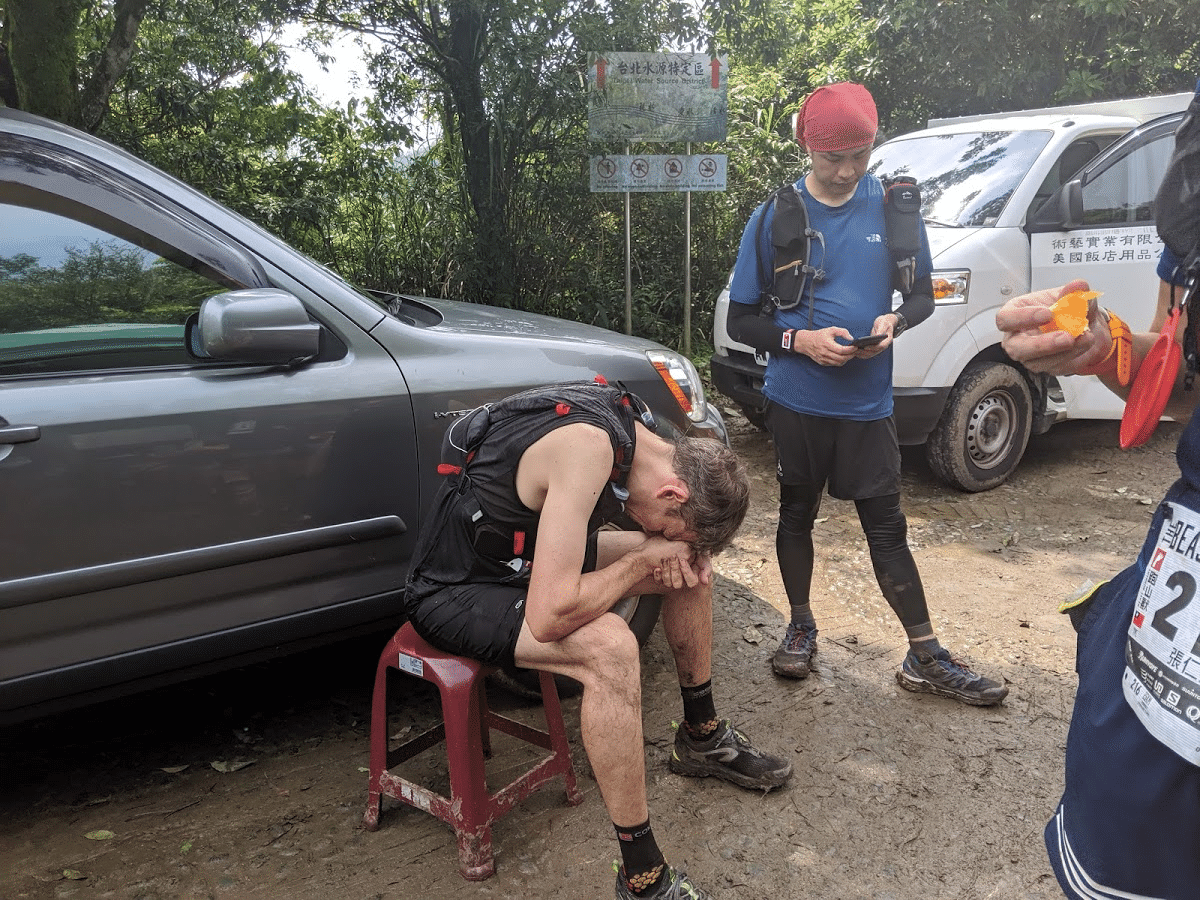
Then there was the temperature and humidity. The humidity was particularly high, and sweat flowed like a waterfall. This climate had a big impact on my pace, which was not as fast as I would have liked. When I arrived at the checkpoint (aid station), I had to rest for about 20 minutes before I could start again. I also had a light headache and was clearly suffering from heat stroke. Fortunately, my legs didn't cramp up at all. I managed to get through the race by aggressively taking 2RUN as well as salt fever supplements. Although regulations require at least 2 liters of water, I consumed at least 1 liter of water between each aid station. In addition, according to the local Taiwanese, the day was "cool" (laugh).
Aid Stations
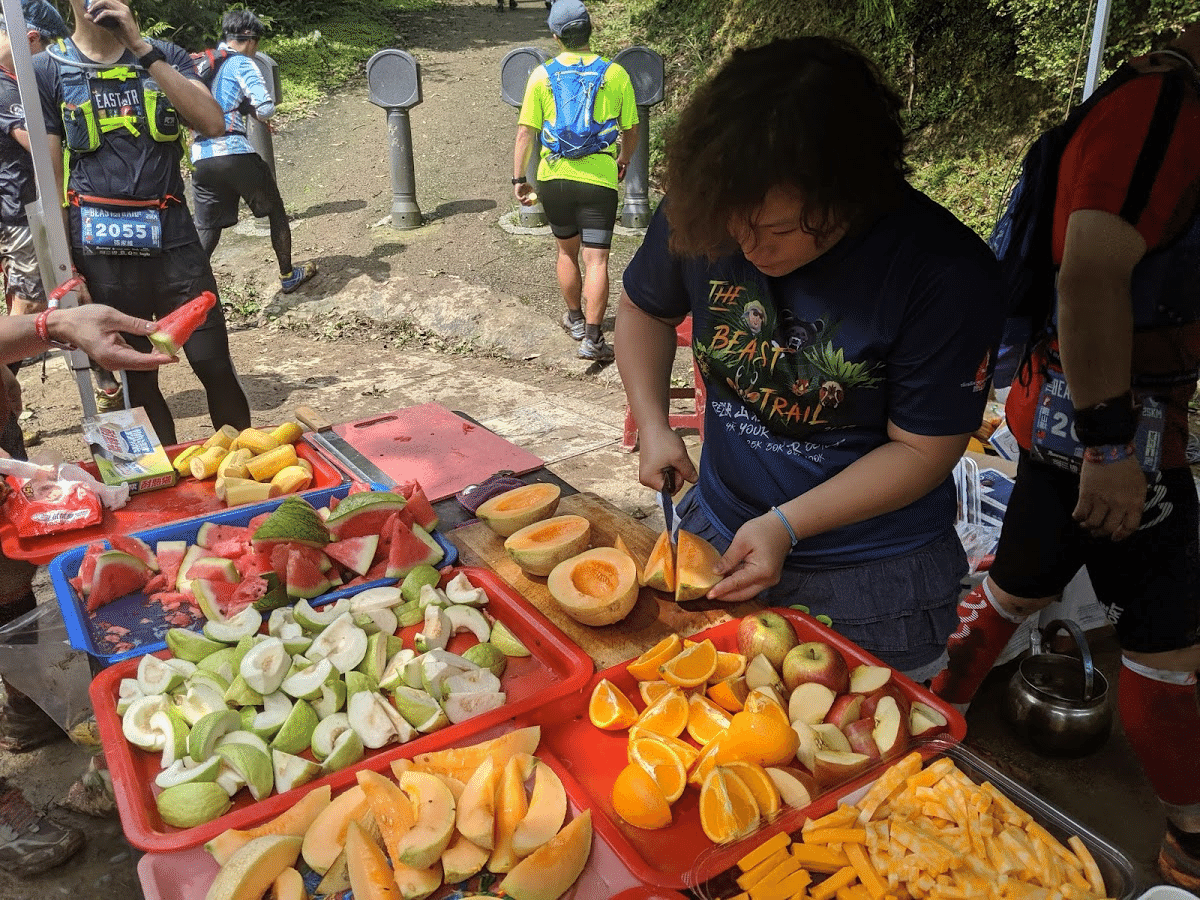
The food served at the aid stations is something that everyone is interested in.
As one would expect from Taiwan, there was an abundance of fruit. Melons, watermelons, and oranges are perfect for such hot weather. Cheese, peanut butter sandwiches, and crackers were available, but I didn't want to eat them in this heat, so I didn't touch them at all. The powdered candy gels I brought from Japan and the colas provided at the aid stations were my energy source. Water, sports water, and cola were provided as drinks.
Note that there are no restrooms at all.
After the goal
After the finish line, participants move to the river to wash off their muddy feet, clothes, shoes, and sweat. Everyone washed their bodies and cleaned the mud off their gear here. Everyone must have slid around. Afterwards, they drank beer (the first one was free) and enjoyed the free Taiwanese food and BBQ. Taiwanese races are fun not only during the race, but also after. It's like a party. There is a sense of freedom from a certain kind of hardship that pervades the area.
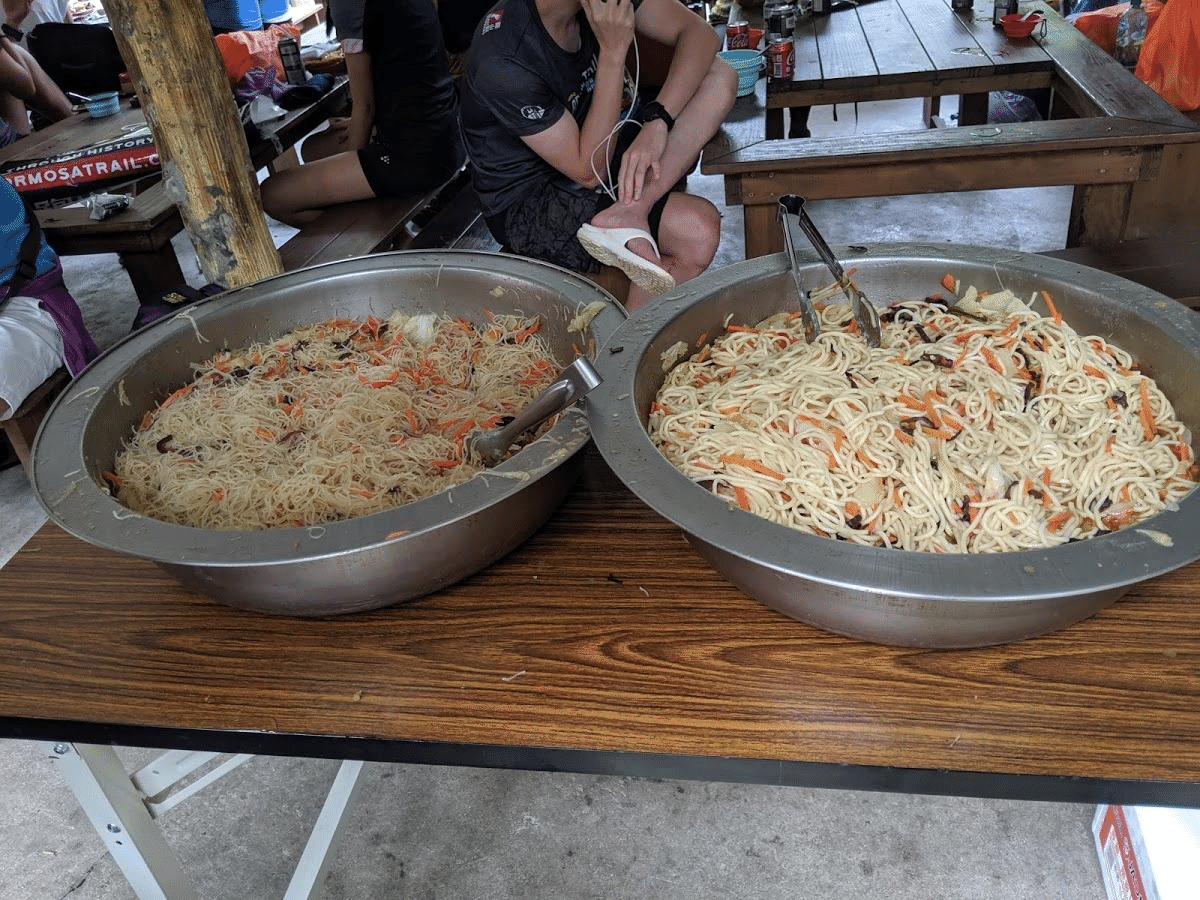
The top runner in the 50km race was 9 hours, 42 minutes, and 51 seconds, which shows the difficulty level of this race. As a sign of the champion, a "knife" of the Taiwanese aborigines is sent to you. The thing is a real knife, so you can't bring it on board the plane when you return home (you have to check it in as checked baggage...)
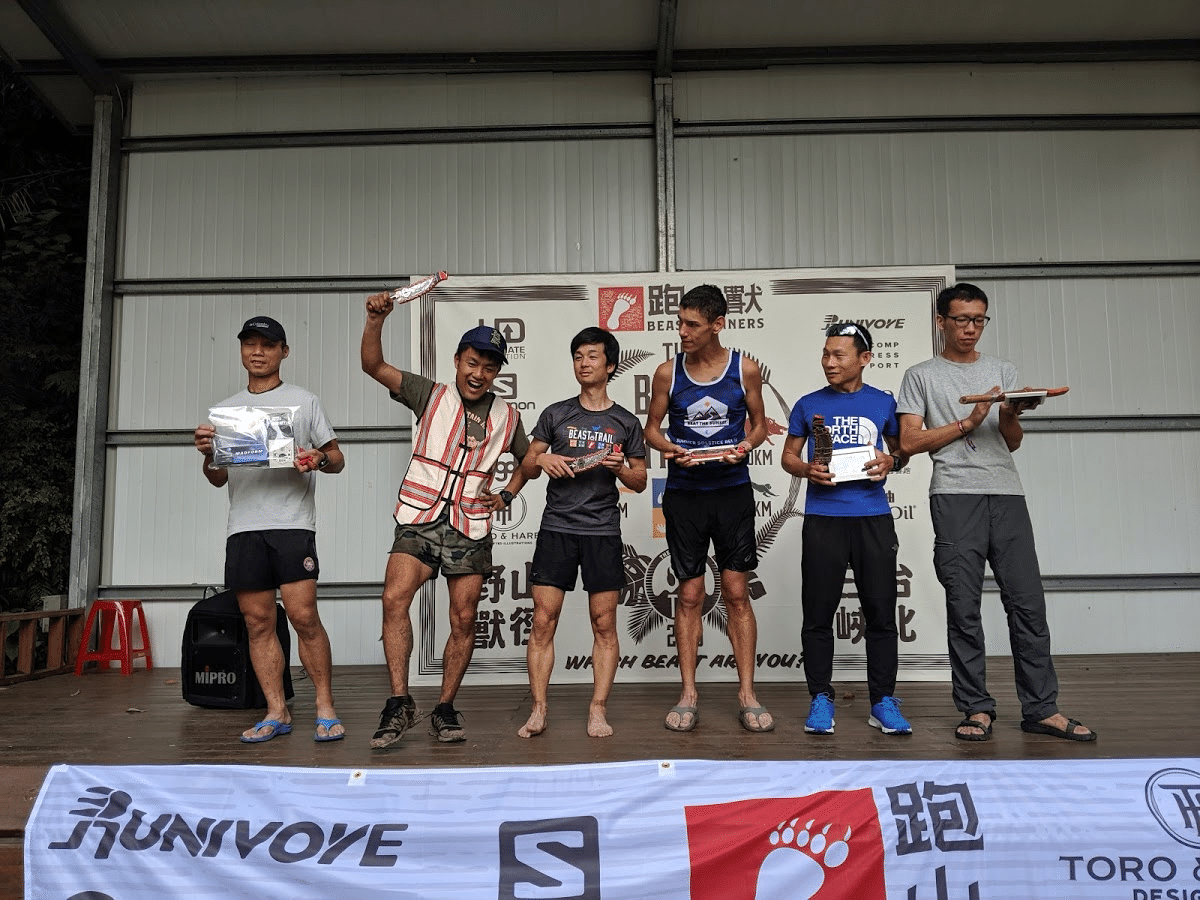
After running THE BEAST TRAIL 25km
Even though it was a short race of 25km, it took me 7 hours to complete this super tough race, and I felt as tired as if I had finished a 50km race. Even the Japanese runners in the top 5 had wobbly legs after finishing the race. First of all, THE BEAST TRAIL is a trail race, or rather, a running version of adventure race, which can not be experienced in Japan.
However, this race seems to have many repeaters both in Taiwan and overseas (Yuta Matsuyama, one of the top 5 runners, is a heavy user who has won the race in the past). It is true that the course is extremely tough, but the sense of accomplishment after completing the race is unbelievable. However, it is a race that divides people into those who like it and those who dislike it, so there may be those who, after participating once, think, "I will never participate again," while there may be those who want to participate again. I'm more of the latter. I'd like to try the 50km next year.
It would not be an exaggeration to say that THE BEAST TRAIL is a race to challenge one's own limits, without regard to human-made concepts such as "goal time" and "taking good videos and photos. I felt that this is exactly the kind of race that awakens the "beast = wildness" that lies dormant in us and lets us play around in the mountains to our heart's content.
I am sure that THE BEAST TRAIL will be held again in 2020. For my part, I would like to see more Japanese trail runners participate in THE BEAST TRAIL. This year, a total of 16 Japanese runners participated: 6 in the 50km, 6 in the 25km, and 4 in the 12km. Personally, I would like to see more than 50 runners participate in THE BEAST TRAIL. Major races such as UTMF and ASO ROUND TRAIL are held around this time of year, and anyone who has completed even one of these races should definitely visit Taiwan. I hope you will visit Taiwan to add a new spice to your trail running life, or rather, a new stinky tofu!
We look forward to seeing you in Taiwan next year.
